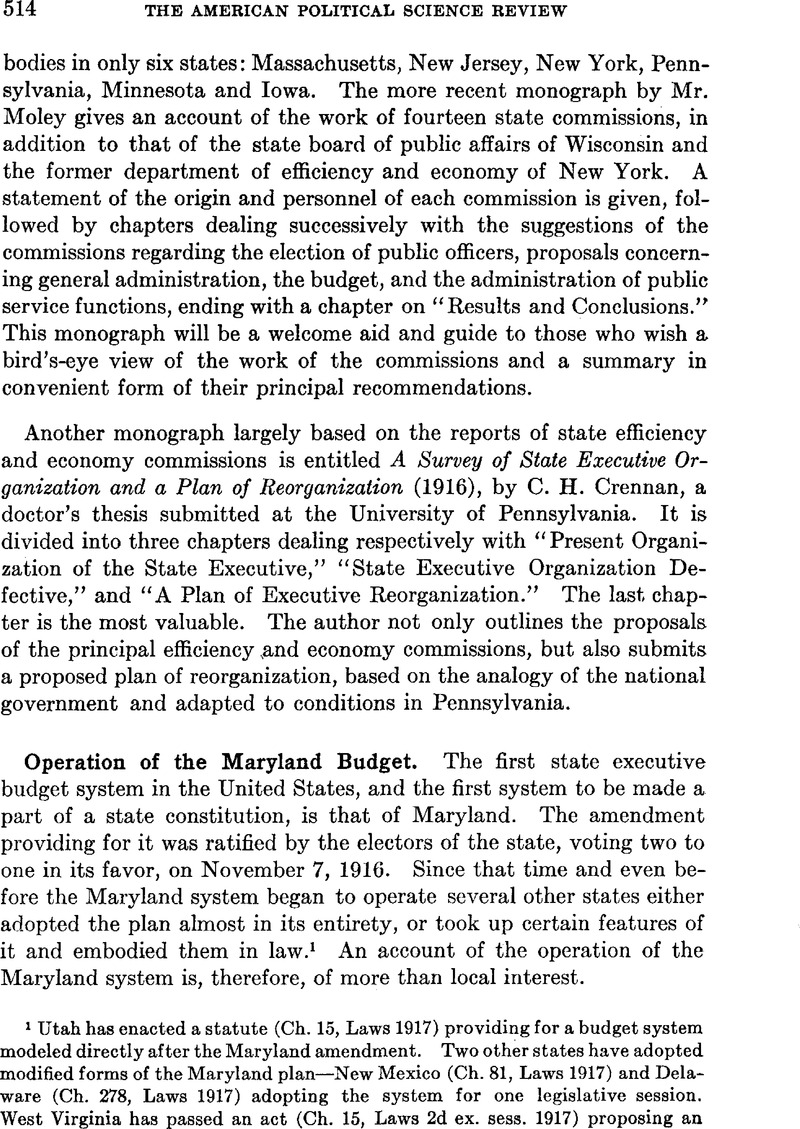No CrossRef data available.
Published online by Cambridge University Press: 02 September 2013

1 Utah has enacted a statute (Ch. 15, Laws 1917) providing for a budget system modeled directly after the Maryland amendment. Two other states have adopted modified forms of the Maryland plan—New Mexico (Ch. 81, Laws 1917) and Delaware (Ch. 278, Laws 1917) adopting the system for one legislative session. West Virginia has passed an act (Ch. 15, Laws 2d ex. sess. 1917) proposing an amendment to the constitution and embodying several of Maryland's budget provisions. Bills, proposing modifications of the Maryland system, were submitted in 1917 to the legislatures of Colorado, Massachusetts and Arizona. Governor Keyes of New Hampshire in his inaugural message to the 1917 legislature suggested the Maryland system for consideration, but no action was taken. A law, signed by Governor Davis on February 19, 1918, provides an executive budget system for Virginia very similar to that of Maryland.
2 For the provisions of the Maryland budget amendment see Article III, Section 52 of the Constitution.
3 Section 3 of the Budget Act, Ch. 206, Laws 1918.
4 Senate Journal of Proceedings, pp. 720–733.
5 Ibid., pp. 812–813.
Comments
No Comments have been published for this article.